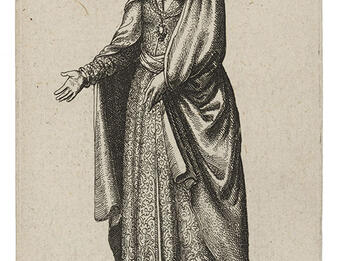A woman beautiful in every way
A woman beautiful in every way
I give you—pedigreed, with every skill—
And all you want to know is what’s the dowry!
That’s not the way to think; that’s faulty judgment.
If you’d appraise her qualities aright,
You’d answer yes, and say, What need for riches?
If you were sensitive to her eyes’ beauty,
You’d say, What other joys has life to offer?
What woman was the first to offer dowry?
Queen Jezebel? Lilith? Maybe Zeresh?
Whoever it was defiled the name of woman.
A man without a wife is just a scrap,
He has no happiness, he’s stuck in hell,
His house untended and his bed unwarmed!
Translated by .
Raymond P.
Scheindlin
Credits
Jacob Frances, “A woman beautiful in every way (Hebrew),” in Kol shire Yaʻakov Fransis (1615–1667) (The Poems of Jacob Francès) by Jacob ben David Francese, trans. Pnina Navè Levinson (Penina Naveh) (Jerusalem: Mosad Bialik, 1969), 342.
Published in: The Posen Library of Jewish Culture and Civilization, vol. 5.






